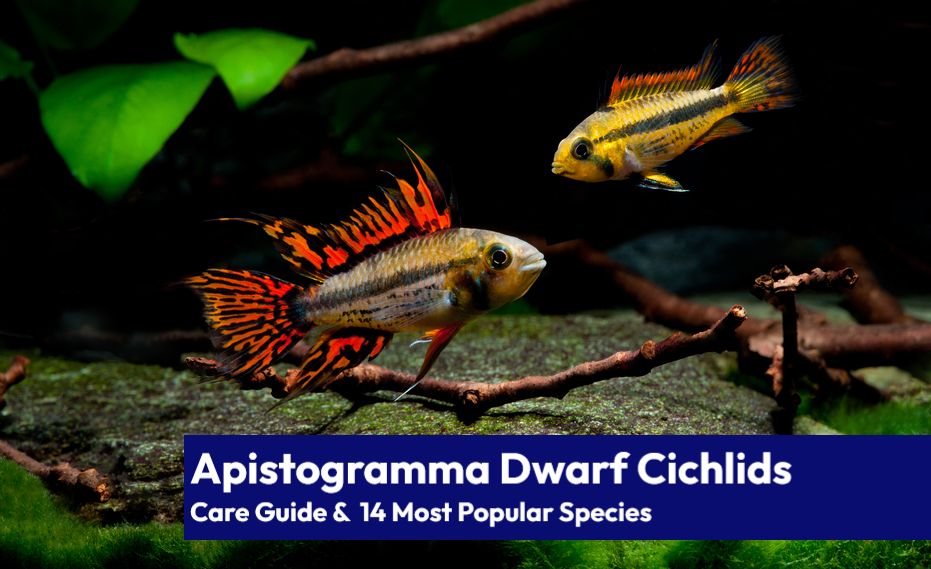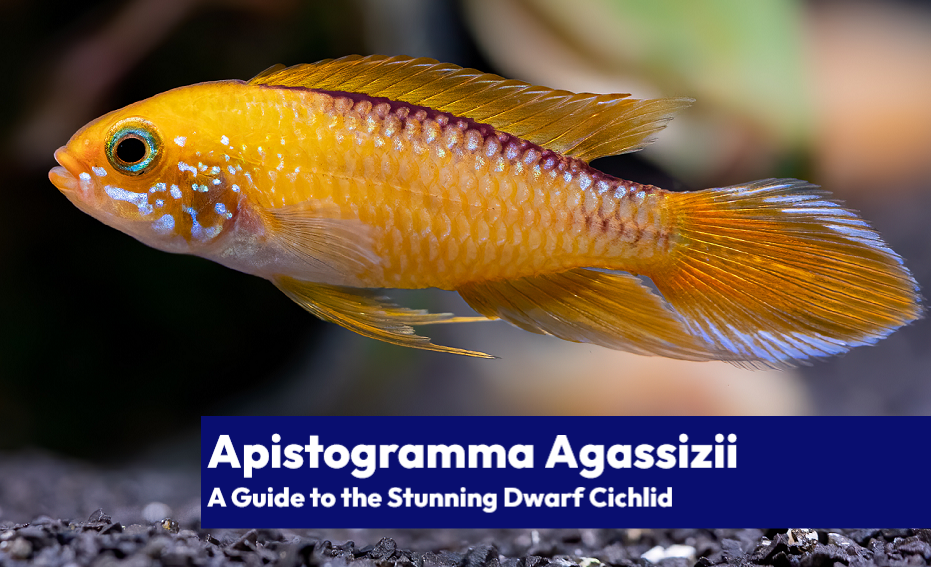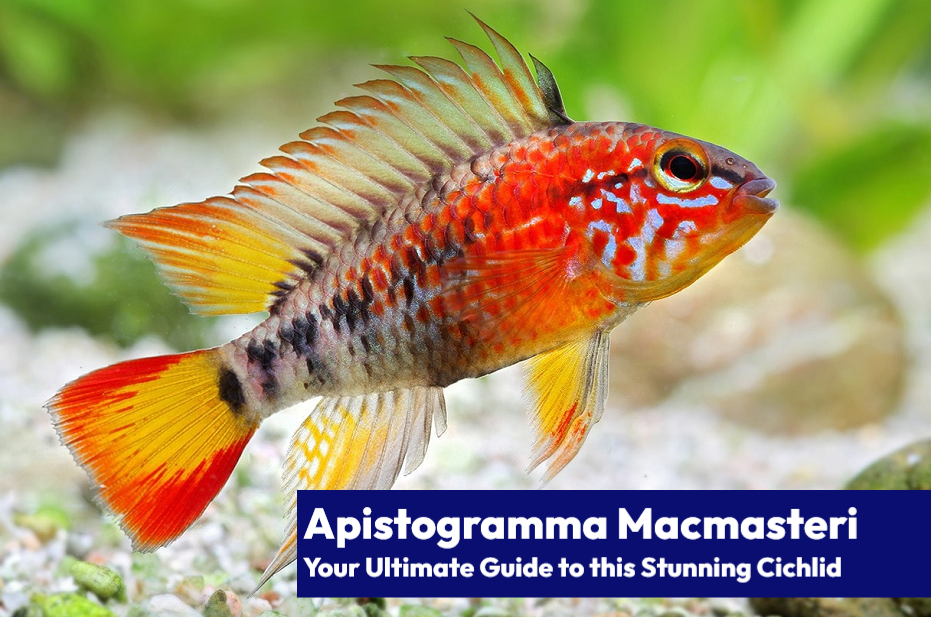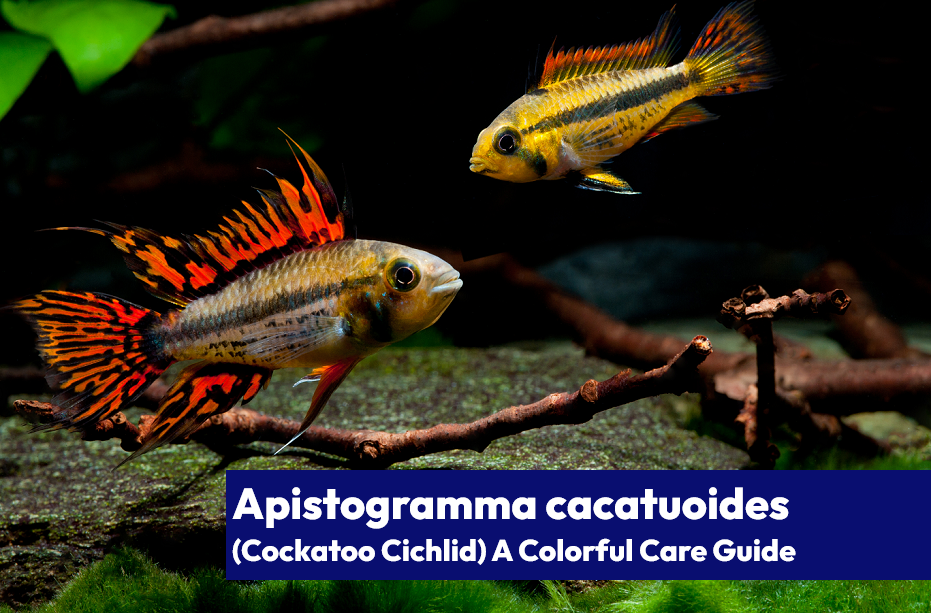The Bolivian Ram, also known as the Bolivian Butterfly Cichlid, is a captivating and colorful freshwater fish that is native to the Amazon Basin in South America. Its vibrant, shimmering scales and regal, flowing fins have made it a beloved addition to many aquariums across the world. With its lively personality, social behavior, and easy-to-care-for nature, it’s no wonder that the Bolivian Ram is a favorite among fish enthusiasts.
As you explore the world of freshwater fish, you’ll find that the Bolivian Ram is a unique and enchanting creature, one that will bring life and color to your aquarium. From its striking appearance to its playful personality, the Bolivian Ram is a great addition to warmer tropical community tanks. Whether you’re an experienced fish keeper or just starting out, this article will give you all the information you need to provide your Bolivian Ram with a happy, healthy home.
| Data Point | Description |
|---|---|
| Scientific Name | Mikrogeophagus altispinosus |
| Tank Size | 20 gallons (76 L) minimum |
| Water Temperature | 75°F to 82°F (24°C to 28°C) |
| Water pH | 6.0 to 7.5 |
| Water Hardness | 10 dGH or lower |
| Water Type | Soft to Moderately Hard |
| Lighting | Bright lighting is needed for the health of live plants |
| Filtration | Canister or hang-on-back filter |
| Substrate | Sand or fine gravel |
| Diet | Omnivore, feed a varied diet of dry, frozen, and live foods |
| Tankmates | Peaceful, compatible with similar sized fish |
Note: Bolivian Rams are very sensitive to changes in water parameters, therefore it is important to maintain stable water conditions in the tank. Regular water changes, at least 25% per week, are also recommended to keep the water quality high.
Appearance
The Bolivian Ram is a stunning species with a vibrant, metallic sheen that covers its entire body. The fish’s base color ranges from light blue to steel blue, with electric blue stripes and brilliant yellow highlights. Its flowing fins are a mix of electric blue, yellow, and black, giving the fish a regal, graceful appearance. They are characterized by a high-dorsal fin that gives it a distinctive butterfly shape.

Bolivian rams have snouts reminiscent of parrot beaks, a black eye stripe, and a black spot on the lateral line make them truly unique and beautiful. In times of stress, six indistinct crossbands can appear on their bodies, and during brood care, the female’s yellowish body color will become more intense.
Lifespan
On average, a Bolivian Ram will live about 5 years. With proper care, they can live for up to 7 years in captivity.
Average Size and Growth Rate
The average size of a mature Bolivian Ram is about 3.5 inches (8.89 cm) and is considered a small to medium-sized cichlid. The growth rate of this species is relatively slow, taking about 2-3 years to reach its full size.
Tank Size
A minimum tank size of at least 20 gallons (76 L) minimum is recommended for keeping a pair of Bolivian Rams.
Water Parameters
The Bolivian Ram prefers a pH level of 6.4-7.6, a water hardness of less than 10 dGH, and a temperature range of 75°F to 82°F (24°C to 28°C).
Diet
The Bolivian Ram is omnivorous and will eat a variety of foods, including pellets, flakes, frozen, and live foods. A diet that includes a variety of proteins, veggies, and grains will keep your fish healthy and vibrant.
| Food Option | Benefits for Bolivian Rams |
|---|---|
| Brine Shrimp | A rich source of protein and essential nutrients. |
| Bloodworms | A high-fat, high-protein treat that helps boost overall health. |
| Daphnia | A small, crustacean-like food that provides a balanced diet. |
| Tubifex Worms | A high-protein treat that is a favorite among many fish species. |
| Mosquito Larvae | A nutritious and easily digestible food option. |
| Krill | A shrimp-like food that is rich in essential fatty acids. |
| Cyclops | A single-celled organism that provides a balanced diet. |
| Mysis Shrimp | A nutrient-dense food that provides a variety of essential vitamins and minerals. |
| Algae Wafers | A slow-sinking food that is rich in vegetable matter, making it ideal for herbivorous species. |
Housing Requirements
Bolivian Rams prefer a high-quality filter and heater to maintain the proper water parameters. Live or artificial plants, can help provide hiding places and add to the natural appearance of the tank. A moderate current from a filter or powerhead will also help keep the water oxygenated and promote good water quality.

When setting up your Bolivian ram tank, be sure to include fine sand for them to dig in, pieces of driftwood for them to hide around, and flat stones for them to lay their eggs on. Be sure to leave plenty of open swimming space for these active fish.
Behavior and Temperament
The Bolivian Ram is a social and peaceful species that gets along well with other fish. However, they can become aggressive towards other fish of the same species during breeding. This fish is generally active and enjoys exploring its environment.
Bolivian Rams are also known for their natural nest building behavior, using pebbles and plants to construct a spawning site.
Breeding
When it comes to breeding these cichlids, it’s a love story for the ages. Male Bolivian Rams are slimmer and more active, often displaying their fins and courting the females. When a female takes a liking to a male, she’ll let him know, and the pair will form a bond and start the spawning process.
They are relatively easy to breed and make great pets for hobbyists. In this section, we will discuss the key aspects of breeding Bolivian Rams, including the differences between males and females, spawning, egg care, and raising the fry.
Male and Female Differences
Males of the Bolivian Ram species are slightly longer and slimmer than the females. Females, on the other hand, have a rounder belly and a stouter appearance. The males are known for their active behavior and often display their fins to attract females. When a female catches a male’s eye, he will start courting her and chase away other males. Bolivian Rams are biparental and open-spawning cichlids. Courtship involves various body movements and preparation of spawning sites.

Spawning
Bolivian Rams typically lay their eggs on a hard surface, such as stone or wood, and only very rarely in sand. During the spawning process, the genital papilla of the female becomes visible and takes on a blunt appearance, while the male’s papilla becomes more pointed. The courtship can last for several days and involves reciprocal displays and mouthing the spawning surface.
Once a suitable surface has been chosen, the male will clean the area thoroughly and dig pits around it in the sand to transfer the larvae later. The male becomes highly aggressive during this time, so it’s advisable to separate the breeding pair from the rest of the fish in the aquarium using a tank divider. After the cleaning is complete, the female will begin the spawning process, laying eggs a few at a time, which the male will immediately fertilize. The entire process can last for around an hour and result in 100 to 300 eggs laid in a circle.

Egg Care
After the spawning is finished, the female will fan the eggs with her pectoral fins and protect the territory, with the male often relieving her for a few seconds. After approximately 48-60 hours, the larvae will hatch from the eggs, and the female may help extricate them. She will then carry the larvae in her mouth to a pre-dug pit.
After 5 to 8 days, the larvae will become free-swimming and can be fed freshly hatched Artemia and microworms. To ensure the health of the hatch, it’s recommended to perform a 40% water change every other day using water with the same physical and chemical parameters. Elevated concentrations of nitrates can lead to large losses, so it’s important to maintain water quality.

Raising the Fry
The juveniles of the Bolivian Ram species are very active, but the parents are not always successful at protecting the territory, making it important to separate the fry from other fish. The fry can be moved to another aquarium or separated from the rest of the fish using a tank divider. After around six months of proper feeding, the young fish should average around 4 cm in length.
Tankmates
The Bolivian Ram is best kept with other peaceful species of similar size and temperament. Good tankmates include tetras, danios, gouramis, and other small cichlids. They can be shy and not ideal to house with assertive or aggressive fish.
These fish are a good choice for community tanks as they are more tolerant of lower temperatures and a wider range of water conditions than some other cichlids.
| Fish Species | Description |
|---|---|
| Angelfish | Graceful swimmers with a peaceful demeanor that complement the vibrant colors of Bolivian Rams. They prefer a similar water chemistry and will do well in a community tank. |
| Neon Tetra | Bright and energetic, Neon Tetras add a pop of color to any tank. They are small, peaceful fish that are comfortable in a group and prefer similar water conditions as Bolivian Rams. |
| Cardinal Tetra | A staple of the freshwater aquarium hobby, Cardinal Tetras are lively and energetic fish. They add a splash of red to any tank and are great companions for Bolivian Rams. |
| Discus | A slow-moving and graceful fish, Discus adds elegance to any community tank. They share similar water preferences with Bolivian Rams and complement the Rams’ vibrant colors. |
| Black Phantom Tetra | A dark and mysterious fish, Black Phantom Tetras add depth to any tank. They are peaceful, social fish that will do well in a community with Bolivian Rams. |
| Gourami | A unique and interesting fish, Gouramis are peaceful and adaptable. They are larger than most other compatible tankmates for Bolivian Rams, but they will do well in a community tank with similar water conditions. |
| Hatchetfish | A unique and fascinating fish, Hatchetfish are graceful swimmers that prefer the upper level of the tank. They are ideal companions for Bolivian Rams and add a different dimension to the tank. |
| Plecostomus | A hardworking and essential fish, Plecostomus are great at keeping the tank clean. They are peaceful and adaptable, and will do well in a community with Bolivian Rams. |
| Corydoras | An active and friendly fish, Corydoras add activity to the bottom of the tank. They are peaceful and social, and will do well in a community with Bolivian Rams. |
| Apistogramma | A vibrant and colorful fish, Apistogrammas are great companions for Bolivian Rams. They are a bit more challenging to keep than other compatible tankmates, but they are well worth the effort. |
| Guppies | A popular and hardy fish, Guppies are great for adding color to any tank. They are active and social, and will do well in a community with Bolivian Rams. |
| Mollies | A hardy and adaptable fish, Mollies are great for adding color to any tank. They are peaceful and social, and will do well in a community with Bolivian Rams. |
| Zebra Danios | An energetic and active fish, Zebra Danios are great for adding movement to any tank. They are peaceful and social, and will do well in a community with Bolivian Rams. |
| Amano Shrimp | A unique and fascinating addition to any tank, Amano Shrimp add a different dimension to the tank. They are peaceful and will help keep the tank clean, and are ideal companions for Bolivian Rams. |
History and Origin
The Bolivian Ram (Mikrogeophagus altispinosus) is a species of fish that originates from the rivers and streams of South America, specifically in the upper Rio Guaporé and Rio Mamoré basins in Bolivia and Brazil. It is a species of cichlid, a group of fish known for their bright colors and diverse range of behaviors.

The scientific name of these fish, Mikrogeophagus altispinosus, means “small eartheater” in Greek, and refers to their habit of eating small bits of food off the bottom of their tank. The specific epithet, altispinosus, comes from Latin and refers to their elongated first ray of the dorsal fin, which is spiny.
Interestingly, there is a bit of a naming controversy with this species. A researcher named Frey introduced the genus Microgeophagus, with a “c,” in 1957. However, in 1968 Meulengracht-Madsen introduced the name Mikrogeophagus, with a “k.” This led to a dispute among scientists about which name was the correct one, but ultimately Mikrogeophagus was judged the valid name.

The species was originally placed in the genus Crenicara and later in the genus Apistogramma, but was later reclassified into the genus Mikrogeophagus due to similarities in morphology and spawning behavior with M. ramirezi (the German Blue Ram).
Despite its popularity as an aquarium fish, the Bolivian Ram is considered to be a threatened species in the wild, primarily due to habitat destruction and the introduction of non-native species. In an effort to conserve the species, several breeding programs have been established in both its native range and in other parts of the world.
In conclusion, the Bolivian Ram is a fascinating species of fish, with a rich history and unique appearance. Its popularity as an aquarium fish has not only made it a household name but has also brought attention to the need for its conservation in the wild. With continued efforts by ichthyologists and hobbyists, we can hope to preserve this species for generations to come.
Diseases and Illnesses
Bolivian Rams are considered hardy fish and are not often prone to illness if proper care is given to them. However, just like any other fish, they can fall ill if their tank environment is not kept clean, water parameters are not maintained, or if they are stressed from inappropriate tankmates or lack of hiding places.
Keep an eye out for signs of illness early on, such as abnormal swimming patterns, changes in color, and loss of appetite. Early detection and treatment can prevent the illness from spreading and improve the fish’s chance of recovery. Maintaining good water conditions, providing a balanced diet, and reducing stressors can also help prevent illness in Bolivian Rams.
| Illness | Description | Treatment |
|---|---|---|
| Dropsy | A condition where the fish’s abdomen becomes swollen due to the accumulation of fluids. It can be caused by a variety of factors, including bacterial infections and organ failure. | Increase water quality and temperature, treat with antibiotics, and add Epsom salt to the water. |
| Fin Rot | A condition where the fins become frayed or rot, often due to poor water quality or bacterial infections. | Improve water quality, treat with antibiotics, and keep the water temperature stable. |
| Ich | A parasitic infection that causes white spots on the skin and fins of the fish. | Raise the water temperature to 86°F (30°C), treat with an ich medication, and do partial water changes. |
| Swim Bladder Disorder | A condition where the fish have trouble swimming and maintaining their balance, often due to overfeeding, constipation, or physical damage. | Fast the fish for several days, feed smaller and more frequent meals, and treat with medications if necessary. |
| Hole-in-the-Head Disease | A condition where small holes form in the head and along the lateral line of the fish, often due to poor water quality, parasite infections, or poor nutrition. | Improve water quality, treat with antibiotics and medications, and provide a balanced and varied diet. |
| Columnaris | A bacterial infection that causes sores, white cotton-like growths, and fin rot. | Treat with antibiotics and improve water quality by doing regular water changes and maintaining a stable temperature. |
Conclusion
In conclusion, the Bolivian Ram is a vibrant, fascinating, and easy-to-care-for cichlid species that is sure to bring life and color to any freshwater aquarium. Whether you’re an experienced fish keeper or just starting out, this fish is a wonderful choice for anyone looking for a lively and engaging addition to their setup. With proper care, the Bolivian Ram can live a happy, healthy life for up to 7 years, providing you with years of enjoyment and entertainment. So why wait? Get your Bolivian Rams today and let the fun begin!
Frequently Asked Questions
Q: How big do Bolivian Rams get?
A: Bolivian Rams typically grow up to 3.5 inches (8.8 cm) in length.
Q: Are Bolivian Rams aggressive?
A: Bolivian Rams are generally peaceful fish but may become territorial with other similar species.
Q: How many Bolivian Rams can be kept in a 20-gallon tank?
A: It’s recommended to keep only one pair of Bolivian Rams in a 20-gallon tank.
Q: How many Bolivian Rams can be kept in a 30-gallon tank?
A: It’s recommended to keep two to three Bolivian Rams in a 30-gallon tank.
Q: How many Bolivian Rams can be kept in a 40-gallon tank?
A: It’s recommended to keep three to four Bolivian Rams in a 40-gallon tank.
Q: How many Bolivian Rams should be kept together?
A: It’s recommended to keep Bolivian Rams in at least a pair. Ideally, purchase a group of six to eight young fish and keep them in a tank large enough for the group, around 75 gallons.
Q: What do Bolivian Rams eat?
A: Bolivian Rams are omnivores and will eat a variety of foods including flakes, pellets, frozen, and live food such as brine shrimp and worms.
Q: Are Bolivian Rams hardy?
A: Bolivian Rams are relatively hardy fish, but they can be prone to certain illnesses if kept in poor water conditions.
Q: Can a Bolivian Ram live alone?
A: It’s not recommended to keep a single Bolivian Ram as they are social fish and do best in pairs.
Q: Can Bolivian Rams live with angelfish?
A: Yes, Bolivian Rams can live with angelfish but it’s important to provide enough space and hiding spots to avoid any aggression.
Q: Do Bolivian Rams eat shrimp?
A: Bolivian Rams are omnivores and may eat small shrimp if they are hungry enough.
Q: How long do Bolivian Rams live?
A: Bolivian Rams can live up to 5 to 7 years with proper care.
Q: How to sex Bolivian Rams?
A: Bolivian Rams can be sexually distinguished by observing the differences in coloration and the shape of the dorsal fin. Males tend to be more brightly colored and have a more elongated dorsal fin compared to females.

Tim Priest, a renowned aquarium expert with over 15 years of experience in aquatic gardening and fish education, is dedicated to helping enthusiasts create stunning and thriving aquatic environments. As the founder of LearnTheAquarium.com, Tim shares his wealth of knowledge, passion, and expertise through engaging articles, educational resources, and personalized advice.
Discover the secrets to creating captivating underwater landscapes and maintaining healthy aquatic ecosystems. Join Tim on an exciting journey and let your aquarium adventure begin!






